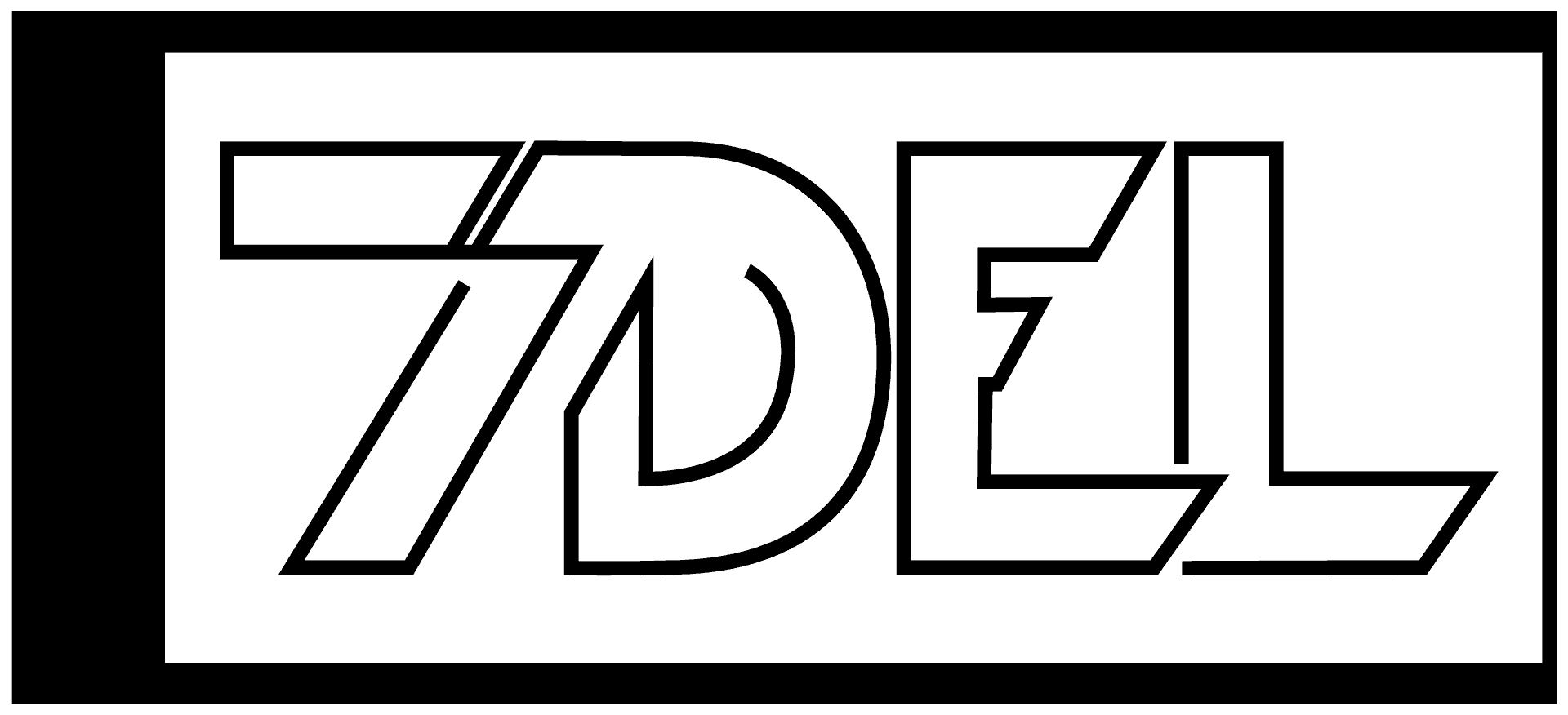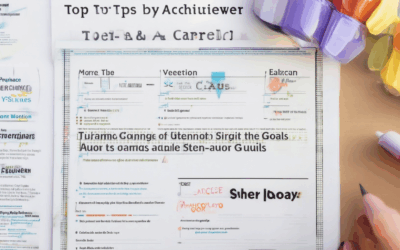In today’s fast-paced world, many of us feel overwhelmed by clutter and chaos. Finding the best ways to stay organized can seem daunting, especially when life demands juggling multiple responsibilities. However, mastering organization isn’t just about efficiency—it’s a lifestyle choice that can significantly boost your productivity and overall well-being. Whether you’re navigating the workplace, managing school tasks, or striving to maintain order at home, this article offers comprehensive strategies to help you thrive. From decluttering your living space to streamlining your daily routines, we’ll explore proven methods tailored to every aspect of life. So why wait? Start your journey towards a more organized and fulfilling life today!
Key Takeaways
- Establish a consistent morning routine to kickstart productivity.
- Utilize task management tools like Todoist or Trello for effective organization.
- Declutter your workspace and implement digital clutter solutions for a clean interface.
- Prioritize tasks using the Eisenhower Matrix to balance urgency and importance.
- Adopt flexible time blocking to manage your day more efficiently.
- Set achievable goals and track progress to stay motivated.
- Address procrastination by breaking tasks into small, manageable steps.
- Secure your digital assets with a reliable password manager.
- Practice mindfulness and reflection to improve focus and reduce stress.
- Seek support and join communities for accountability in your organizational journey.
- Recognize common struggles like time management, procrastination, and stress as part of the organizational process.
- Understand root causes such as poor planning, habits, and insufficient sleep to address disorganization effectively.
- Implement solutions like daily goal setting, task decomposition, and stress-reduction techniques to enhance productivity and organization.

What is your best strategy for staying organized?
Staying organized is crucial for maximizing productivity and achieving long-term goals. Here are proven strategies to help you stay on track:
- Set Clear Goals:** Define both short-term and long-term objectives. Break them down into manageable tasks to avoid feeling overwhelmed.
- Use a Planner or Digital Tool:** Employ tools like calendars, task management apps, or planners to track deadlines and priorities effectively.
- Prioritize Tasks:** Categorize tasks by urgency and importance. Focus on high-priority activities first to ensure key responsibilities are met.
- Break Projects Into Smaller Steps:** Divide larger projects into smaller, achievable milestones to maintain progress without feeling daunted.
- Schedule Regular Reflections:** Dedicate time weekly to review your progress and adjust your plans as needed, ensuring alignment with your goals.
- Stay Flexible:** Be open to changes and willing to adapt your strategies as circumstances evolve, allowing for better responsiveness to shifting priorities.
- Collaborate and Delegate:** Identify tasks that can be handed off to others, freeing up your time for more critical responsibilities.
By implementing these strategies, you can create a structured approach to organization that adapts to your unique lifestyle and objectives. Remember, consistency and continuous refinement are key to sustaining long-term success.
How to Train Yourself to Be More Organized
Organizing your life can significantly boost productivity and reduce stress. Here’s a step-by-step guide to help you get started:
- Prioritize Tasks:** Use the Eisenhower Matrix to categorize tasks by urgency and importance. This method helps you focus on what truly matters and reduces overwhelm.
- Adopt a Digital Tool:** Choose a task management tool that suits your lifestyle, such as Trello , Asana , or Todoist . Set reminders to keep track of deadlines.
- Break Down Projects:** Tackle large projects by dividing them into smaller, manageable steps. Set milestones to track your progress and maintain motivation.
- Declutter Your Workspace:** Create a tidy workspace using organizers and a simple filing system. A clean environment can enhance focus and efficiency.
- Practice Time Management:** Combat procrastination with techniques like the Pomodoro Technique , working in focused intervals with breaks to maintain concentration.
- Use Calendars Effectively:** Leverage digital calendars like Google Calendar to schedule tasks and set reminders, ensuring nothing gets missed.
- Regularly Review and Adjust:** Schedule monthly reviews to assess what’s working and make necessary adjustments, keeping your organizational strategy effective and adaptable.
By combining these strategies, you can develop a personalized organizational system that supports your goals and enhances your daily life.

How to Get Organized with ADHD
Organizing can feel overwhelming for those with ADHD, but with the right strategies, it becomes manageable. Here’s a step-by-step guide to help you regain control:
Understanding ADHD and Organization
ADHD often affects executive functioning, making tasks like planning and sticking to schedules challenging. However, with awareness and effort, you can overcome these hurdles. Understanding your unique challenges is the first step toward solutions.
Core Organizational Strategies
- Break Tasks into Smaller Steps: Divide large projects into manageable tasks. For example, a big report becomes researching, drafting, and revising.
- Use Task Management Tools: Tools like to-do lists, digital apps (e.g., Todoist ), or project management software can help track progress.
- Implement Visual Organizers: Use visual aids like whiteboards, mind maps, or digital tools (e.g., Trello ) to plan and execute tasks effectively.
- Create a Weekly Schedule: Plan your week in advance, allocating specific times for work, rest, and leisure activities to prevent overwhelm.
- Prioritize with Techniques Like the Eisenhower Matrix: Categorize tasks by urgency and importance to focus on what truly matters most.
Tools and Techniques for Better Organization
- Digital Tools: Utilize apps like Habitica to build habits around organization and productivity.
- Time Blocking: Allocate specific time slots for tasks to minimize distractions and maximize efficiency.
- Physical Space Optimization: Implement systems like the KonMari Method to streamline your living and working environments.
Maintaining Order Over Time
Organization isn’t a one-time fix. Regularly review and adjust your system to suit your evolving needs. Flexibility is key to long-term success.
Don’t hesitate to seek support from friends, family, or professionals who understand ADHD. Connecting with others who share your challenges can provide valuable insights and encouragement.
Community and Support
Building a support network is crucial. Consider joining local or online ADHD support groups (e.g., ADDitude Magazine ) or consulting with ADHD coaches for personalized guidance.
Remember, organization is a process, not a destination. Celebrate small victories and stay motivated knowing that every step forward brings you closer to your goals.

How to Stop Being Disorganized
Disorganization can be a significant challenge, but with the right strategies, it’s possible to regain control over your life. Here’s a step-by-step guide to help you become more organized:
- Establish a Morning Routine:** – Start your day with a consistent morning routine. Begin with simple tasks like making your bed or having a scheduled breakfast time to set a positive tone.
- Use Task Management Tools:** – Employ digital tools like Todoist or Trello to manage your tasks effectively. These platforms offer reminders and progress tracking to keep you on schedule.
- Declutter Your Workspace:** – Organize your desk and surrounding area. Use drawer organizers, file holders, and desktop partitions to create a functional workspace that minimizes distractions.
- Implement Digital Clutter Solutions:** – Regularly clean up your email inbox using methods like the “Inbox Zero” technique, which involves processing and archiving emails daily to maintain a tidy interface.
- Prioritize Tasks with the Eisenhower Matrix:** – Categorize tasks based on urgency and importance. This tool helps you focus on critical tasks while allowing flexibility for less urgent matters.
- Adopt Flexible Time Blocking:** – Schedule your day in 30-minute blocks, allowing for some buffer time between activities to adapt to changes without feeling overwhelmed.
- Set Achievable Goals:** – Break larger objectives into smaller, manageable steps. Track your progress and celebrate milestones to maintain motivation.
- Address Procrastination:** – Combat overwhelm by tackling tasks in small increments. Start with one small step, like picking up a single item, to build momentum and reduce feelings of inertia.
- Secure Your Digital Assets:** – Use a reliable password manager to store and organize your passwords securely. This prevents password reuse and keeps your online accounts safe.
- Practice Mindfulness and Reflection:** – Dedicate a few minutes each day to reflect on your progress. Consider using mindfulness apps like Headspace or Calm to help center your thoughts and improve focus.
- Seek Support and Accountability:** – Join online communities or local groups focused on organization. Share experiences and gain encouragement from others who are similarly committed to becoming more efficient and orderly.
By integrating these strategies into your daily life, you can gradually overcome disorganization and create a more structured, productive routine. Remember, it’s a journey, and it’s okay to adjust and evolve your approach as you discover what works best for you.
Why Do I Struggle to Stay Organized?
Struggling to stay organized can stem from various factors, including time management, procrastination, and stress. Here’s a breakdown of potential reasons and strategies to overcome them:
- Time Management Issues: Poor time management often leads to feeling overwhelmed. Using tools like the Eisenhower Matrix can help prioritize tasks based on urgency and importance.
- Procrastination: Addressing procrastination involves breaking tasks into smaller, manageable steps and employing motivational techniques to avoid last-minute stress.
- Lack of Tracking Systems: Implementing a structured approach, such as setting specific task times or using a planner, can enhance accountability and consistency.
- Stress and Anxiety: Stress reduction techniques like deep breathing and meditation can improve focus and clarity, making organization easier.
- Environmental Factors: A clutter-free workspace with designated zones for different activities can foster a more productive environment.
- Poor Habits: Establishing consistent sleep schedules and healthy routines can improve overall well-being and cognitive function.
- Perfectionism: Embracing a flexible approach and understanding that organization is a process can alleviate pressure and make the task more manageable.
To improve, consider adopting these strategies: prioritize tasks, break them into smaller steps, use organizational tools, manage stress, maintain a tidy workspace, establish healthy routines, and embrace a non-perfect approach to organization.

Understanding Why You’re Feeling Messy and Lazy
Your messiness and laziness may stem from several interconnected factors. Here’s a breakdown of possible reasons and solutions:
- Lack of Planning and Organization: – Solution: Start by setting clear, achievable daily goals and maintaining a simple to-do list. Prioritize tasks based on importance and urgency.
- Poor Time Management: – Solution: Break larger tasks into smaller, manageable steps. Allocate specific times for each task to avoid last-minute rushes and stress.
- Procrastination: – Solution: Identify patterns in your procrastination and address them. Consider using techniques like the Pomodoro method to boost productivity and reduce delays.
- Low Motivation and Energy Levels: – Solution: Incorporate regular exercise into your routine to increase energy. Engage in activities that genuinely interest you to boost motivation.
- Negative Habits: – Solution: Replace unproductive habits like late-night snacking or excessive screen time with healthier alternatives like reading or light exercises.
- Stress and Anxiety: – Solution: Practice stress-reduction techniques such as meditation, deep breathing exercises, or journaling to alleviate tension and improve focus.
- Irregular Routine: – Solution: Establish a consistent daily schedule, including weekends, to foster discipline and reduce spontaneity-related chaos.
- Self-Criticism and Perfectionism: – Solution: Embrace imperfection and recognize that everyone has messy periods. Celebrate small achievements to maintain motivation.
- Insufficient Sleep: – Solution: Aim for 7-8 hours of quality sleep each night to enhance mood, energy, and functionality.
To address these issues effectively, consider implementing a combination of these strategies. Remember, progress takes time, and it’s essential to be patient with yourself as you work towards becoming more organized and efficient.




0 Comments